Reading Time: 8 minutes
Meerut dates to the Indus Valley Civilisation and is referred to as Ravana’s sasural. An industrial and a cantonment town, Dr. Roopali unfolds its many colours and hues. An exclusive for Different Truths.

Meerut in the Uttar Pradesh (U.P.) state of India is said to have settlements dating back to the Indus Valley Civilisation. Popular belief has it the city derives its name from Maya Rashtra, meaning the country of Maya. According to Hindu mythology, Maya was the architect of the asura demons. Maya Rashtra is also often referred to as King Ravana’s sasural – his wife’s parental home.
Meerut is an important industrial town in western U.P, traditionally known for handloom and scissors industries. It attracts many shoppers from neighbouring towns to its bustling markets. The main attractions are gold jewellery and wedding finery.
The ever-expanding city is also well known for its manufacturing industries of sports goods and trophies.
The ever-expanding city is also well known for its manufacturing industries of sports goods and trophies. Meanwhile, historical, and renowned religious places lie within close distance. The Church of Our Lady of Graces at Sardhana built by Begum Sumroo is a mere 14 kilometres away. The city of Hastinapur with its modern Jain temples and ancient remnants of the Mahabharata is another 14 beyond that.
Meerut: Part of the NCR
A fancy new six-lane highway now connects the National Capital Region[i] (especially, NOIDA and Delhi) to Meerut. It’s also a part of the NCR. You can drive over to Meerut’s famous Dilli Darbar restaurant for lunch. After lunch you can be back home in no time for an afternoon siesta! Just about an hour each way.
Word to the wise, though. The sleep-inducing murgh kaalimirch (pepper chicken) and the chicken biryani could get you arrested for drunk driving! It might be better to check into a nearby hotel. There are plenty amongst the city’s twisted lanes.
During the British Raj, Meerut became a major military centre – a cantonment…
During the British Raj, Meerut became a major military centre – a cantonment (Cantt). Even today, it is one of the largest cantonments in India. Here in the sprawling environs of Meerut Cantt, you can wake up to the Azaan call of the muezzin to prayer. Then the temple bells ring out in the nearby Dogra mandir, built by the Dogra Regiment. A clean organised disciplined temple.
Peacock Cries
The splendour-tailed peacock cries out its mating call. Birds of all hues and shapes welcome another glorious day. The sun rises slowly. The sky touching trees letting it play hide and seek.
Yes, this is the same sun that eventually set over the British Empire. The one that did not allow any Indian subject of the Empire to walk on the Mall Road. A little distance away is the lane, which still calls itself the Royal Artillery Lines. That is where I live with my family. A house that they say has witnessed much history.
While cities and streets are being rechristened, Meerut Cantt continues to carry its colonial past.
While cities and streets are being rechristened, Meerut Cantt continues to carry its colonial past. Cannon Row Road, Royal Artillery lines, Clement Street. Remember, if we erase our colonial past, we simultaneously erase the martyrdom of our freedom fighters.
History abounds in the remnants of a past that seems to have impinged surreptitiously into the present. The year 1857 is a constant memory not quite forgotten. The preferred nomenclature for the Gandhi Park is still Company Garden.
Sadar Bazaar still stands, referencing the East India Company. Crowded and bustling. The Kali Paltan temple and the Abu Ka Nullah are still there. They once divided the brown natives from the white British soldiers. The nullah now, a dirty stinking drain.

Painth Bazaar PC Author 
Famous Meerut Aaloo Kachori – PC Author 
Ramzan in Meerut PC author
India’s First Battle of Independence
It is here on that hot summer day, in May 1987, that India’s first battle for independence began. “The Revolt of 1857”, the British called it. Inside the two-hundred-year-old St John’s Church lie hundreds of marked and unmarked graves. Many of the dead are the only witnesses to those turbulent days.
Yet there are stories galore of ghosts walking the night, calling out to whoever they spot.
The dead don’t speak, they say. Yet there are stories galore of ghosts walking the night, calling out to whoever they spot. No one ever stops to hear their stories. A pity, though. And then there’s winter when the graves open and English ghosts step out.
On moonless nights horses thunder past the State Bank of India. It was once the home of Queen Victoria’s youngest son. A headless horseman leads the cavalry of ghost soldiers. And on some nights, one might pick up the shrieks of women and children. Meerut Cantt also boasts a dilapidated haunted house, simply called “Bhoot Bangla.” It’s full of ghosts and rumours and attracts and detracts visitors.
Rujimun Bazaar
And you cannot miss the Rujimun Bazaar, a distortion of the old Regiment Bazaar. There is little trace of anything colonial in this narrow market except for a few washermen. These washing wizards Dhobi Men can wash, press, and dry clean your clothes with exceptional precision! The heartwarming sight of a bicycle carrying a neat bundle of perfectly ironed linen. A colonial throwback!
The Dhobi Men have excellent manners fragrant with smoked wood coal.
The Dhobi Men have excellent manners fragrant with smoked wood coal. The deference and love they bring to their job are a legacy of colonial heritage. They are a critical community who keep their clients looking all ‘tip-top’ like the White sahibs.
The faujis are the new brown sahibs. The Dhobi Men now serve our men and women in uniform. Keeping them tip-top. Starched clothes, a professional requirement, spill into civilian life, neatly pressed and creased.
Toekhana, the Armoury
Topekhana once housed the armoury. Laal Kurti was where the British soldiers wearing red coats were billeted. Both are now bustling marketplaces. Not just that, but Meerut and Painth Bazaar are inseparable. This bi-weekly roadside haat bazaar is now a permanent market. In its tunnel-like interiors are rows of haberdasheries. They sell brightly embroidered finery, wedding clothes, party attire, fancy knick-knacks. The cows roam freely here. Their heyday is now over. Their productive years are behind them.
If in Meerut, you hear of chicken stew then you must know it is in its new avatar… Ishtew.
If in Meerut, you hear of chicken stew then you must know it is in its new avatar… Ishtew. Cooked mostly by Muslim khansama (cooks). The Ishtew is slow-cooked. Small pieces of chicken in a spicy, thick, sweetish-gravy, with a generous dash of pepper. Pepper corn and star anise add an Anglo-Indian aroma. It is enjoyed with hot rotis cooked on an upside-down griddle/tawa.
Oh, and how could I forget the mithai (sweetmeat) shops. The milk cake, which is not a cake at all, is made only of milk solids. The halwai (confectioner) boils milk and cooks it down many times. It must turn granulated and caramalised. Cut into pieces once it is cooled, it resembles little squares of cake. The traditional Aggarwal and Gupta mithaiwallah (confectioners) also sell massive sized jalebi and gulab jamun (sweets).
Lassi in Kullhar
The legendary Haria Lassiwala sells lassi in kullhar (clay cups). He is known far and wide for his delectable yogurt drink. There is also the deep-fried spiced potato in a flaky pastry snack – the aaloo-kachori. Sizzling and popping in huge iron kadhai (woks). Try these at the iconic Pinky Chholey-Bhaturey Walah and the Dilli Chholey and Chaatwaale.
Traditional bakeries abound in the city. Bright red and green pastries and cream rolls, buns with little bits of dried fruit, biscuits, and patties. Customary naashta (snack) with sweetened brewed milky tea. Another favourite is the puff pastry without any filling. Here in Meerut, it is called “Fan.” A very popular snack to accompany teatime…anytime. Mostly relished by the working class, it is veritably non-perishable. For teatime. Any time! A crisp flaky imitation from the kitchens of the white sahibs and memsahibs.
Higher ends of the city now have fancy bakeries popping up all over.
Higher ends of the city now have fancy bakeries popping up all over. Cakes topped with strawberries and thin slices of kiwi or stuffed with honey and walnuts. These places have names like The Cake Factory, A-One Bakery or King’s Bakery. The urban college crowd loves them. The sizeable community of observers of the Jain faith has brought about super bakeries. They offer “eggless” options. Making their wares vegetarian, but not necessarily vegan.
Meerut is most famous for gajjak and revdi (sesame brittle). Come winter and these famed candies fill up shops and marketplace carts. They are a hallmark of Meerut. Revdi is a coin-shaped candy made of sugar or jaggery. It is dipped generously in sesame seeds with a touch of cardamom. Gajjak is much, the same, but instead, it is flaky, layered and light.
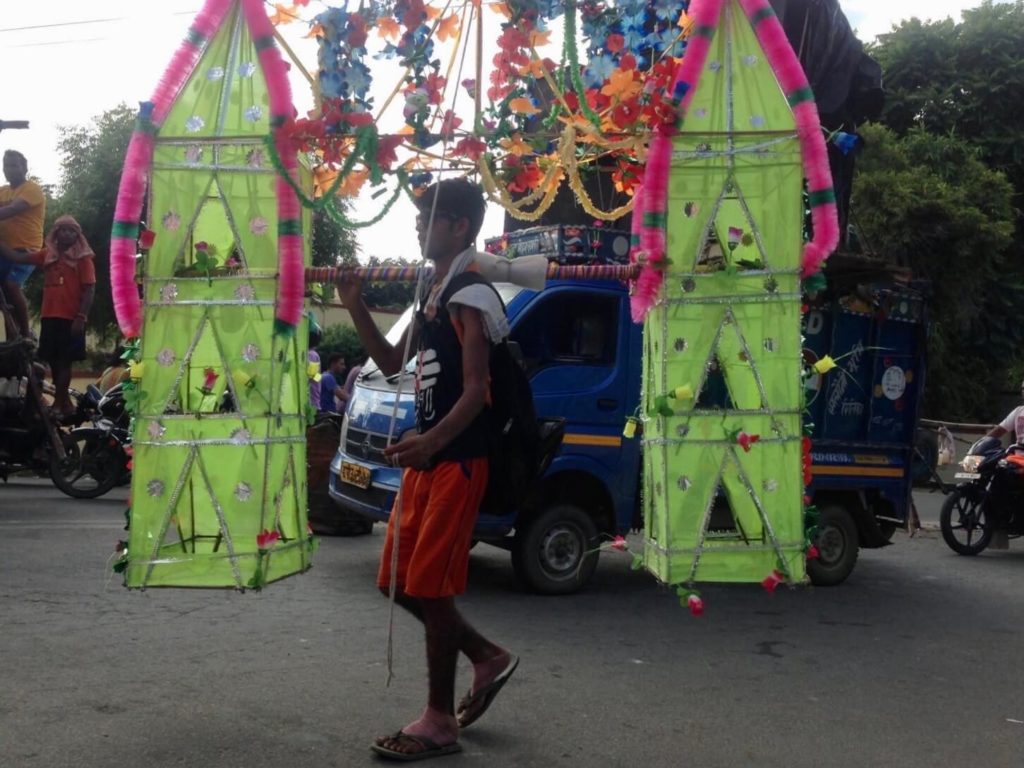
Yearlong Festivities
With a composite population of Hindus and Christians, Muslims and Jains, religious festivities are yearlong here. Eid and Janmashtami, Ganesh Chaturthi and Kavads. They create a colourful vibrant cultural and social milieu in Meerut. But the Covid-19 lockdown and the tragic consequences of crowding have officially put a hold on festivals.
Traffic in Meerut is a wonderful kaleidoscope of centuries of jostling and merging. Bullock carts, bicycles, trucks, cycle rickshaws. Cars of all makes and models, motorbikes, auto rickshaws running on CNG. Motor scooters, electric scooters, ambulances and finally the battery charged e-rickshaw. Everyone is trying to get home.
A sense of history lurks in the columns of houses where once others from another land lived.
A sense of history lurks in the columns of houses where once others from another land lived. Those others who made others of us. If only for a hundred and ninety years.
One such house is the one I live in with my family of humans, flora, and fauna. A soldier lives, here. And four generations of soldiers have lived here and moved on. They were heroes of both World Wars, mentioned in Dispatches. Those documents recognising daily heroism in the battlefield. Their gallant or meritorious action in the face of the enemy described in writing.
Memories abide in yellowing paper.
And the impeccable handwritten letters to their British commanding officers. Polite and firm, informing them of various pending matters. Applications for leave to go home at the birth of a child. “My Dear Sir…. I remain your obedient servant.” Memories abide in yellowing paper.
Swords of Honour, moth eaten tiger skins and antlers, sepia tinted photographs, colonial era furniture. Collectors’ items. A trench-coat and a pair of ammunition boots. Those famous black trunks that say, Major, then Lieutenant Colonel, Colonel and Brigadier. Those boxes that have travelled to far flung places and returned. To places called Tangdhar, Misamari, Aishmukaam and Siachin.
Battle-weary
Battle-weary, battle-scarred, this house is a refuge for all veteran soldiers, who lay their heads here.
A new generation of soldiers now serves their country, with little time to visit their ancestral home. A steady flagpole twice a year bears witness to the ascension of India’s Tricolour.
The home is now a Hermitage.
[i] The National Capital Region (NCR) and its planning board were created under the National Capital Region Planning Board Act of 1985. That 1985 Act defined the NCR as being the whole of Delhi; the Haryana districts of Gurgaon, Faridabad and Sonipat, Rohtak (then including Jhajjar tehsil) and the Rewari tehsil then in Mahendragarh district; and the Uttar Pradesh districts of Bulandshahr, Muzaffarnagar, Meerut (then including Baghpat tehsil), and Ghaziabad (then including Hapur tehsil), and some part of the Rajasthan district of Alwar. The 1985 boundary of the NCR covered an area of 34,144 square kilometres (Source: National Capital Region (India) – Wikipedia)
Visuals by Different Truths

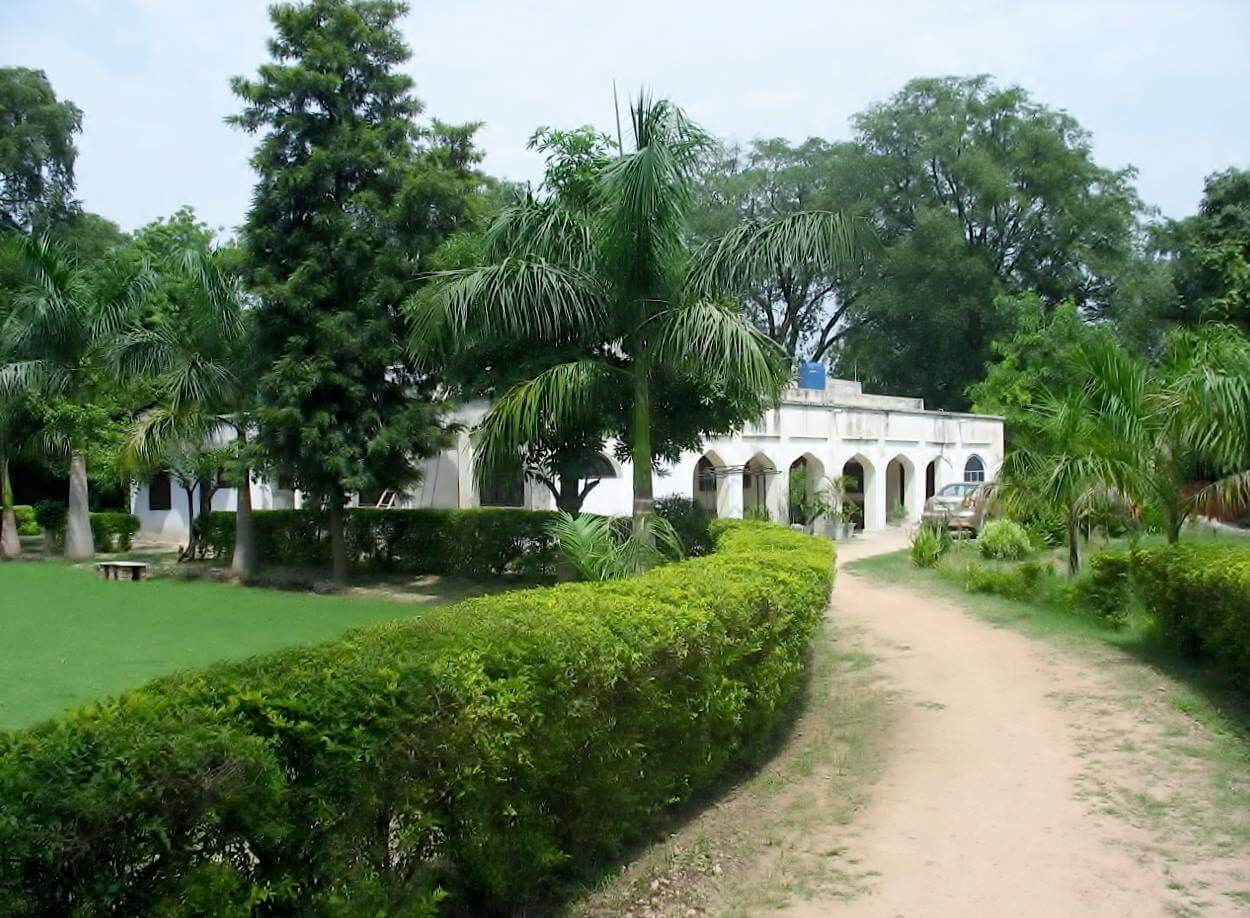
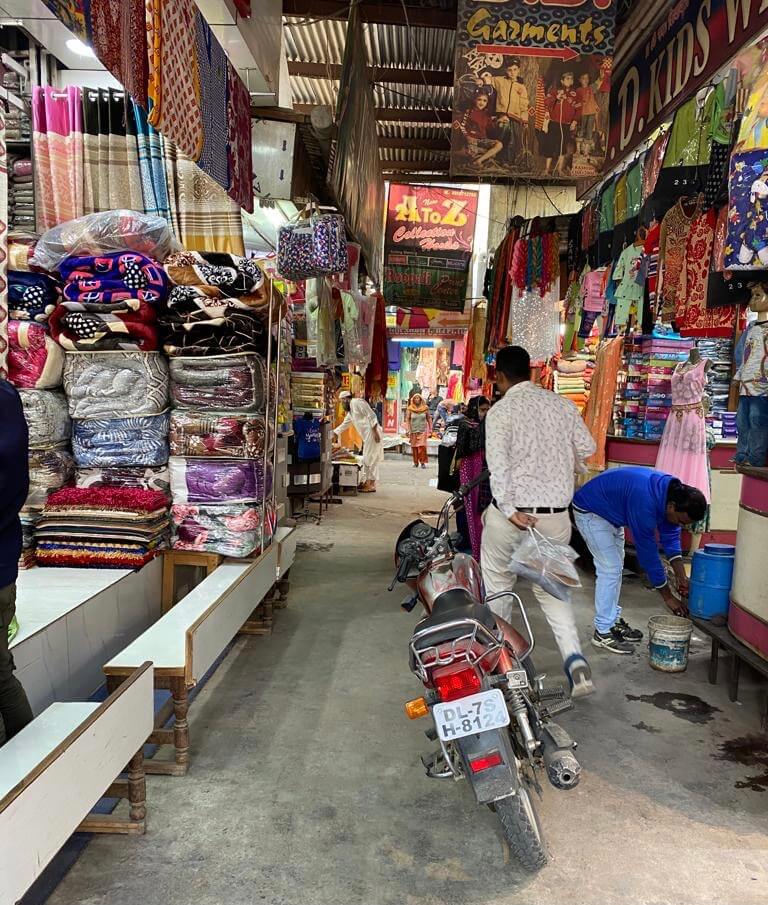
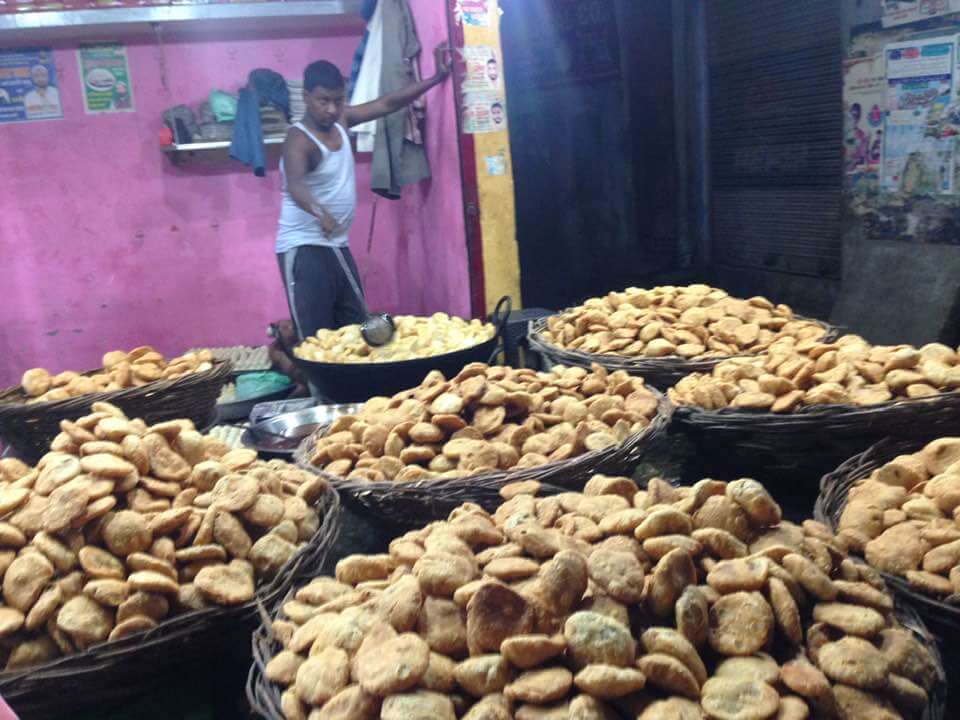
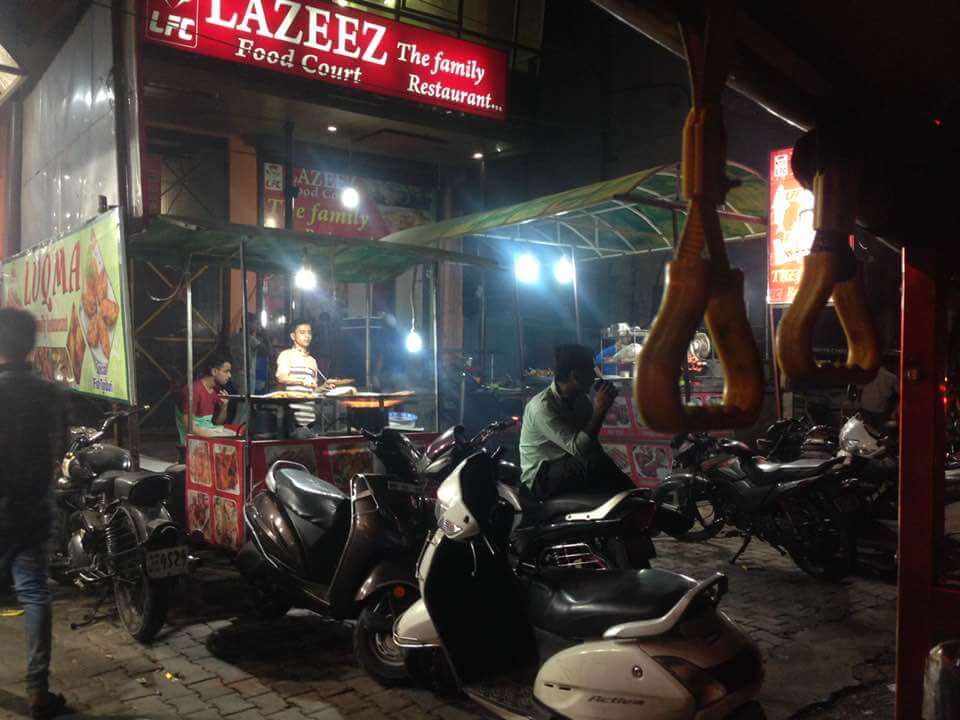














I love reading Dr. Roopali Sircar’s writing. She has a particular eye for that which the rest of us don’t always see.
Beautiful article. Loved reading it.
Wow-what a lovely and delicious walkthrough of Meerut with a dollop of history and ancestral anecdotes. Thank you for giving us glimpse of the same ma’am